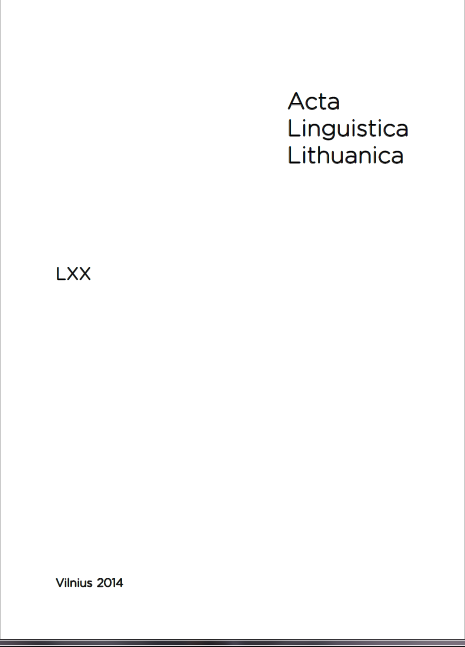Archajiškosios ir inovacinės veiksmažodžio ypatybės Pietų aukštaičių patarmėje Baltarusijoje
Archaic and Innovative Peculiarities of the Verb in the Southern Aukštaitian Sub-dialect in Belarus
Author(s): Nijolė TuomienėSubject(s): Theoretical Linguistics, Semantics, Sociolinguistics, Eastern Slavic Languages, Baltic Languages
Published by: Lietuvių Kalbos Institutas
Keywords: sub-dialects of boundary micro-areas of Southern Aukštaitian; apparent time; archaic peculiarities of the verb; innovative peculiarities of the verb; interaction of languages;
Summary/Abstract: The article addresses two-fold peculiarities of verbs of the continuity of the Southern Aukštaitian sub-dialect in Belarus, Voranava district: archaic remains and innovative phenomena. Conjugation, formation and semantics of verbs from the sub-dialects of the boundary micro-areas of Southern Aukštaitian are reviewed from this perspective. The article follows both dialectological and sociolinguistic data of the past twenty years; therefore, there is a possibility to describe the most archaic and innovative verbal forms as well as to reveal the variation of their use and to identify the direction of their change. Data on the alternative or equivalent use of these verb forms were gathered from the information providers of both the older and the younger generation, enabling their analysis at the apparent time because the language of the older generation reflected the tendencies of use characteristic of the sub-dialect at least fifty years ago, while the language of the younger generation reflects contemporary tendencies characteristic of the same sub-dialect fifty years later. The article provides unique data on the Lithuanian language because certain verbal peculiarities discussed in the article are either not characteristic or little characteristic of the language of residents from the main area of Southern Aukštaitian; they are therefore not recorded or scarcely recorded. On the one hand, a long-term foreign environment and the isolation of the sub-dialect from the main area of the Lithuanian language led the sub-dialects of Voranava into even greater conservation; therefore, though very sporadically used, they feature especially archaic forms of Lithuanian verbs inherited from the remote past, perhaps even dating back to tribal Baltic languages. On the other hand, due to the continuous interaction with Slavic languages (mostly Belarusian), the sub-dialects under analysis underwent such innovative changes which have even formed a rather solid Slavic cover.
Journal: Acta Linguistica Lithuanica
- Issue Year: 2014
- Issue No: 70
- Page Range: 82-104
- Page Count: 23
- Language: Lithuanian

